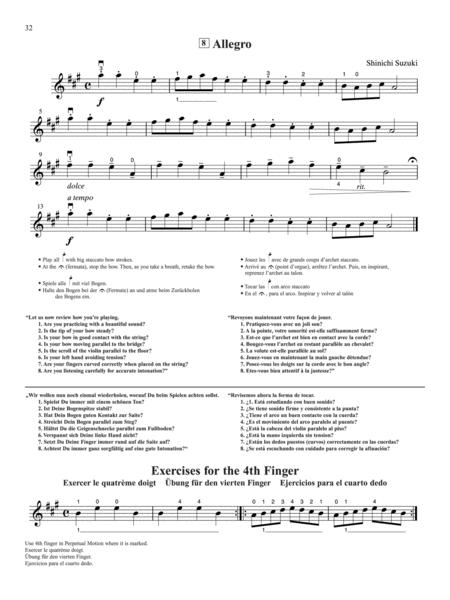- Suzuki Violin Method - Vol 01.pdf. Suzuki Violin Method - Vol 01.pdf.
- This Suzuki Book & CD is integral for Suzuki violin lessons. This edition of the Suzuki Violin School, Volume 1 features:. Revised editing of pieces, including bowings and fingerings. 16 additional pages. Additional exercises, some from Shinichi Suzuki, plus additional insight and suggestions for teachers. Text in English, French, German.
Long, Long Ago, from Suzuki Violin Book 1Thanks for watching! Comment, Like, and Share! Subscribe too!Follow me on IG/FB @CadenzaStringsNC Long, Long Ago 2.
The melody known as “Rousseau’s Dream” was derived from the opening of the ‘Pantomime’ section of Jean-Jacques Rousseau’s 1752 opera Le Devin du village (The Village Soothsayer).
Le Devin du village (The Village Soothsayer). Sometime in the late 1780s, composers of parlor music began using the Rousseau melody for their own songs, usually by shortening the original and then adding their own words. The first known example is the song Sweet Melissa, Lovely Maiden, by J. Dale, published ca. 1789 in London, which uses a version of the melody that is quite similar to the original.
Apparently, the name “Rousseau’s Dream” was first used in print in 1812, with the London publication of Variations on “Rousseau’s Dream” (for solo piano), by J. B. Cramer. Cramer’s version of the melody contains two slight but significant alterations: the first phrase ends on scale-degree 1 (instead of 2), and the second phrase (m.3) starts a third higher than the original. These changes are interesting because they were retained throughout the century that followed, as Rousseau’s Dream gradually evolved into the American folk song Go Tell Aunt Rhody.
There are many documented variants of the Go Tell Aunt Rhody melody, but the vast majority of them contain only four measures, repeated again for each new verse. The melody appearing in the Suzuki books, however, uses the same 12-measure “A–B–A” form as Cramer’s version, therefore it is more precise to refer to the Suzuki melody as Rousseau’s Dream.
Go tell Aunt Rhody She’s Rousseau’s dream, by Murl J. Sickbert, Jr.
Suzuki Violin Part 1 Notes
Overview
Suzuki Violin Part 10


This CD of the Suzuki violin method, Volume 1 features recordings by world-renowned pedagogue Shinichi Suzuki.
Titles: Twinkle, Twinkle, Little Star Variations (Suzuki) * Lightly Row (Folk Song) * Song of the Wind (Folk Song) * Go Tell Aunt Rhody (Folk Song) * O Come, Little Children (Folk Song) * May Song (Folk Song) * Long, Long Ago (Bayly) * Allegro (Suzuki) * Perpetual Motion (Suzuki) * Allegretto (Suzuki) * Andantino (Suzuki) * Etude (Suzuki) * Minuet 1, Minuett III from Suite in G Minor for Klavier, BWV 822 (Bach) * Minuet 2, Minuet, BWV Anh. II 116 from Notebook for Anna Magdalena Bach (Bach) * Minuet 3, Minuet BWV Anh. II 114/Anh. III 183 (Bach) * The Happy Farmer from Album for the Young, Op. 68, No. 10 (Schumann) * Gavotte (Gossec).
This title is available in SmartMusic.